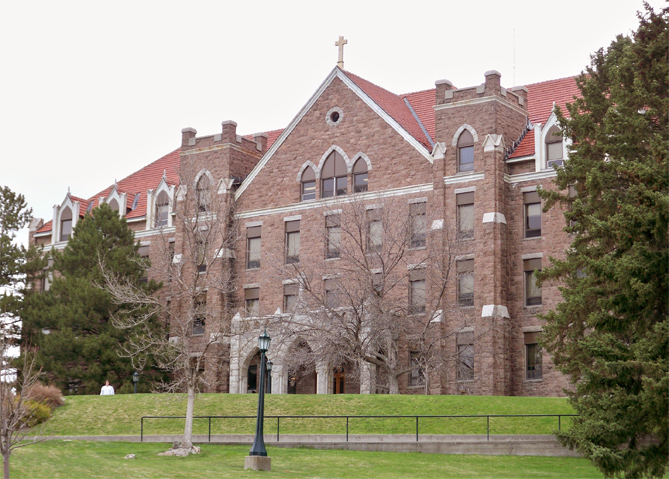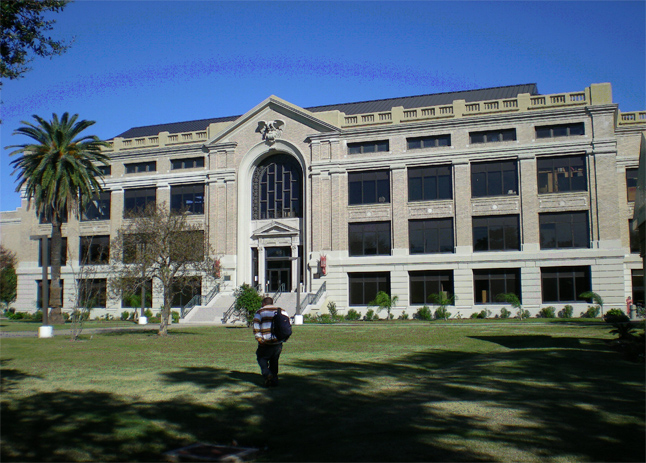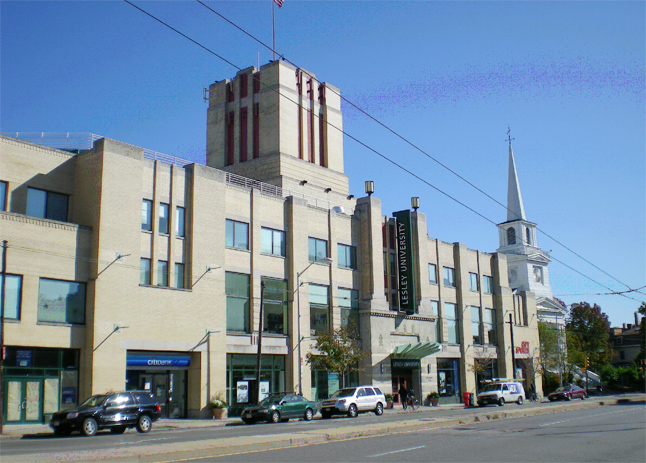| St. Charles Hall – Carroll College, Helena, Montana Isaac Delgado Hall (Building 1) – Delgado Community College, New Orleans, Louisiana
This neo-classical building designed by Edward Angelo Christy (then architect for the city of New Orleans) and completed in 1921 is both the iconic symbol of the College’s City Park campus and its most heavily-used academic and administrative building. Pressed into intensified service in the aftermath of Katrina and the closure of over a third of the campus’s facilities, Building 1 houses classrooms, administrative offices, and the departments ranging from Music to Biology to Child Development to ESL to Theater and the Fitness Center. In order to accommodate accelerating growth (now just shy of pre storm levels) the College is working hard to create new academic space to decompress Building 1 and facilitate renovations that will extend its contributions to the campus and the critical role Delgado is playing in the city’s and region’s re-building. University Hall – Lesley University, Cambridge, Massachusetts
Probably the least traditional of the three buildings, this building was designed by Chicago architect George C. Nimmons and began life in 1928 as a Sears Roebuck department store. Acquired by Lesley in 1994, and now re-named University Hall, it currently houses nearly half of the University’s classrooms, its science programs, its signature School of Education, as well as a vibrant retail floor at street level to maintain a neighborhood amenity and contribute to the activity in Porter Square. Although these buildings are very different in history and function each has endured due to some fundamental qualities: Size – All of these buildings are large, ( St. Charles=75,600, Delgado=118,000 NASF, University Hall=166,000 net square feet) making them more accommodating of change, and churn. Adaptable Structure – Each of these buildings has structural qualities that have ensured longevity and evolutionary capabilities. St. Charles sustained only minor damage to mostly ornamental elements in an earthquake that hit Helena in 1984, and has a robust mixture of large and small spaces to accommodate changing uses. University Hall makes minimal use of bearing walls relying on structural columns that facilitate relatively easy space reconfiguration. Delgado Hall is probably the most structurally constrained, but is at least durable enough to sustain long periods of minimal re-investment. All of the buildings have higher than currently-typical floor-to-floor heights, allowing introduction of systems never contemplated by the original designers and users without compromising the spatial qualities of the rooms. Campus Heritage – Each of these buildings is the highest profile building on campus and in the case of St. Charles and Delgado Halls, so much of the institution’s history is bound to the building that separating the two is nearly impossible. Even University Hall, though a relatively recent acquisition, was instantly the most prominent of Lesley’s buildings and connects it most directly to its neighborhood. The very fact of its acquisition sent a signal to the community that Lesley is a dynamic, growing and entrepreneurial institution with a significant public role, symbolizing its transformation into a distinctive University with an enviable national reputation. Good Esthetics – This is critical. To become an icon, it generally helps to be attractive. None of these buildings are the very best of their types, but all of them evince a refined, handsome presence that speaks to the institution’s region, longevity and aspirations.
George Mathey |
|||||||
|
||||||||
© Copyright 2010 |
||||||||



